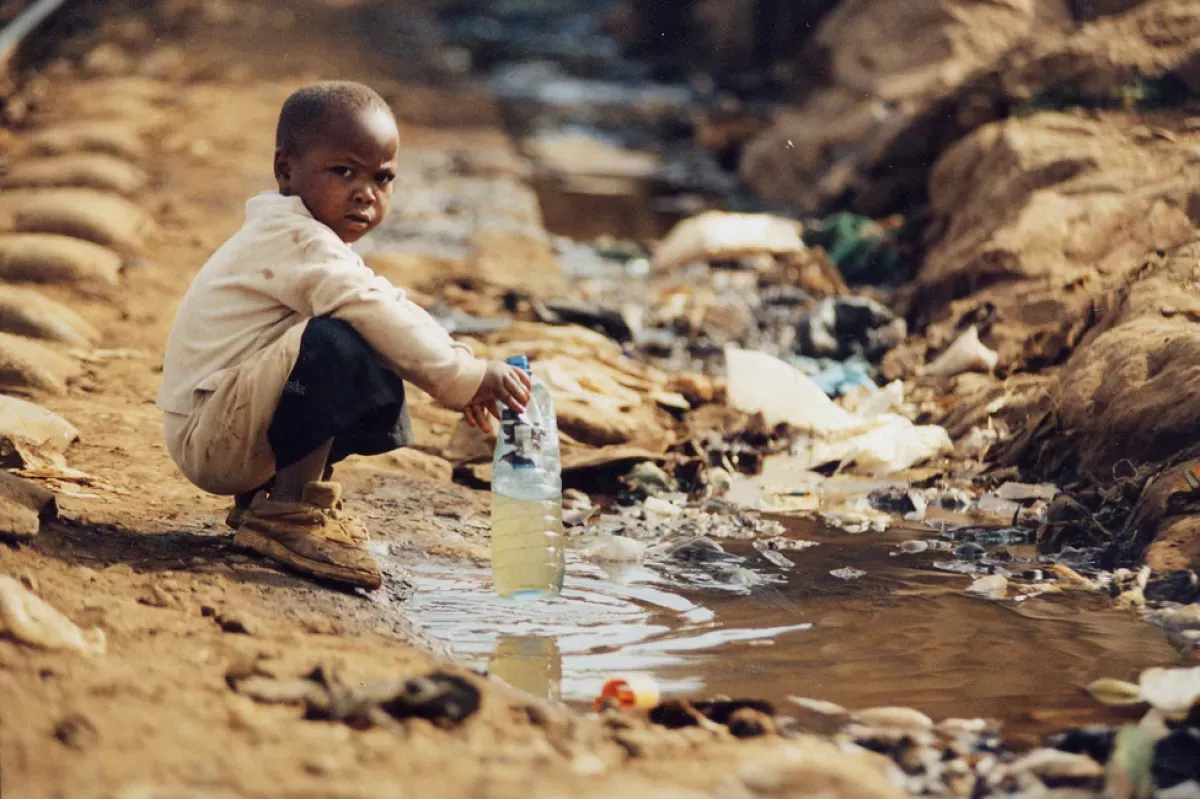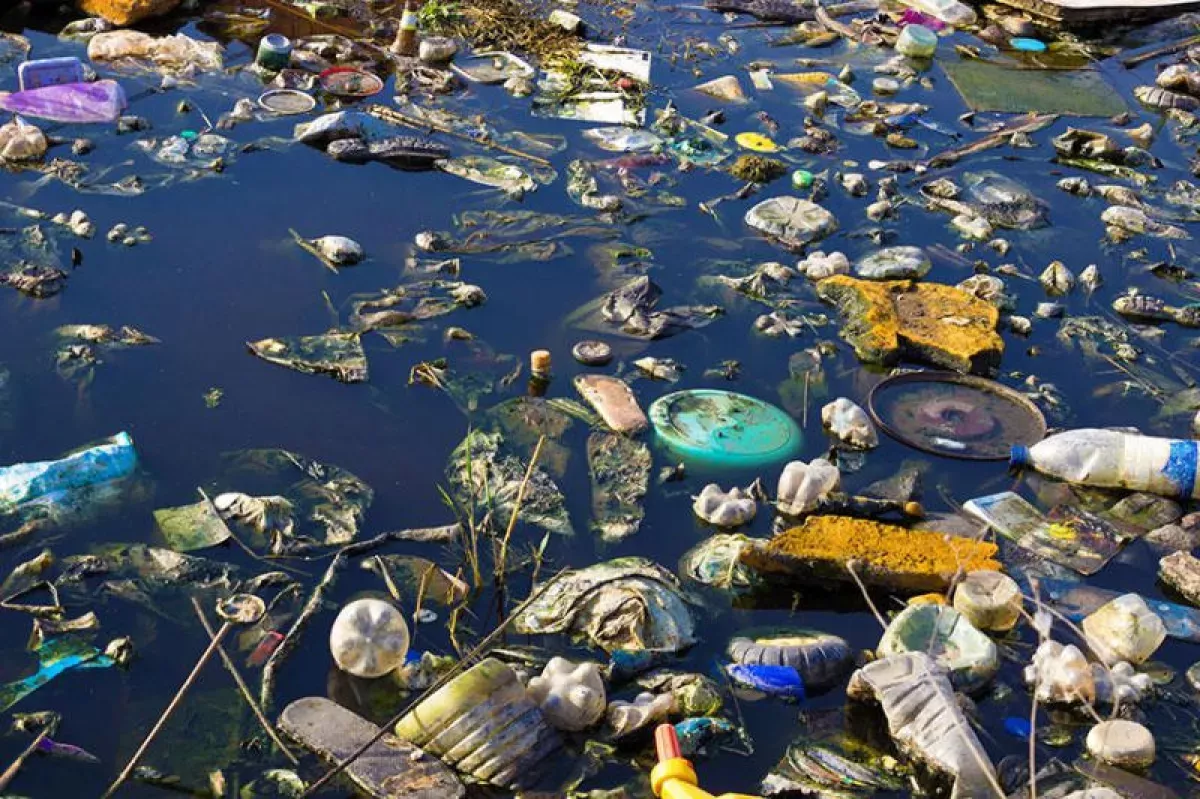Dehydrated humanity: The silent crisis of a thirsty planet
The number of people worldwide without access to clean drinking water is increasing. Since 2024, over 4.4 billion people on the planet have reportedly been deprived of the possibility to drink normal water. This means that today, half of humanity suffers from water scarcity. What are the reasons behind this global “dehydration”?
Priceless moisture
In 2012, experts from the United Nations counted 1 billion people deprived of safe water resources. By 2020, this number had already reached 2 billion — or precisely, every third inhabitant of the planet.
In 2024, according to updated data from independent experts, the figure rose to 4.4 billion people deprived of water suitable for drinking, or more than half of humanity. Moreover, in low- and middle-income countries, the situation is even worse — two-thirds of the population lack access to safely organised drinking water supply services (SMDWS).

Over this period, millions more people have gained access to water, yet its distribution remains highly uneven. The populations most in need of water resources are those in sub-Saharan Africa, as well as in South and East Asia. For example, south of the Sahara, 80% of the population—about 1.1 billion people—lack access to an adequate water supply.
Armed clashes between countries are already occurring over water. A recent conflict between Pakistan and India was largely triggered by Delhi’s intentions to block the flow of the Indus River.
Where does this explosive growth in water scarcity come from? After all, in just four years, the number of people suffering from water shortages has more than doubled. Part of this increase is explained by differences in counting methods. For example, the 2 billion people estimated to lack safe water access, reported by the UN and WHO in 2022, was based on national authorities’ data collected through household surveys.
However, a group of experts from the Swiss Federal Institute of Aquatic Science and Technology, led by Esther Greenwood, suggested that such data collection in regions with low technological development may be incomplete.
For roughly half of the world’s population, objective assessments of drinking water quality simply do not exist. Therefore, the Swiss researchers applied a geospatial methodology based on computer modeling, combining environmental data—including satellite imagery—with survey results from nearly 65,000 households worldwide.
This approach yielded the figure of 4.4 billion people in need of water — more than double the official UN estimates. At the same time, Esther Greenwood emphasizes that in practice, the situation regarding access to safe drinking water may be even worse.
Who is polluting the water?
The main cause rendering water unsafe to drink is faecal contamination, accounting for about 50% of cases. The absence of proper sewage systems and the presence of human and animal waste in water sources lead to bacterial contamination. Particularly dangerous is the E. coli bacterium. The situation is worsened by the fact that regions with polluted water often have very low levels of healthcare or none at all, which frequently results in fatal outcomes from infections.

Dangerous diseases such as cholera, dysentery, typhoid fever, and the less severe norovirus are transmitted through contaminated water. According to the WHO, there has been an explosive rise in cholera cases. In 2024, the number of cholera cases and deaths exceeded 2023 levels by 50%.
The cholera pandemic has been ongoing since 2021, with the particularly alarming fact that the mortality rate is nearly three times higher than usual (2.9% in African countries). Although rare, cholera cases have also been reported in Europe.
Undoubtedly, this deadly epidemic is directly linked to the lack of adequate water supply.
In recent years, there has also been a rise in typhoid fever cases and related deaths in Asian and African countries. Access to clean water is critically important in combating many “neglected tropical diseases,” including trachoma, helminthiasis, and schistosomiasis. These diseases affect over 1.5 billion people across 149 countries, causing blindness, disfigurement, disability, and death.
Chemical contamination of water, both natural and man-made, ranks second as a major cause of unsafe water. Up to 80% of groundwater contamination by arsenic and fluoride is linked to the geological characteristics of the area.
A significant factor worsening the problem is the lack of infrastructure. For many people, running water remains an unattainable luxury. According to the WHO, in 2022, nearly half a billion people relied on unprotected sources such as wells, rivers, lakes, and ponds for their water.
Water instead of bombs
The data from the Swiss researchers was published in 2024. In 2025, the UN and WHO still provide a more conservative estimate—around 2 billion people without access to safe water. Yet even this figure reflects a doubling compared to 2012.
In 2015, 2.4 billion people faced challenges with sanitation services, and nearly one billion practiced open defecation. Despite this, the WHO then reported improvements in several indicators, although target goals were not met. At the same time, about 1,000 children died daily from diarrhea in 2015, down from over 2,000 in 2000.
By 2025, more than 4 billion people still lack access to safe sanitation—1.5 billion more than ten years earlier.
Progress toward the UN Sustainable Development Goal on water and sanitation (SDG 6) is significantly lagging behind other goals, even though this target is considered key to ensuring health, safety, and social progress.
But why, in the 21st century—despite rapid technological growth—are basic indicators related to life and health deteriorating?

Tackling the water crisis requires colossal investments. According to World Bank estimates, ensuring access to safe water demands current funding of $7 trillion. By 2050, this amount is expected to rise to $22.6 trillion. However, the World Bank forecasts that only about 36% of the necessary funding will actually be available. It seems priorities have shifted toward other goals.
Yet access to safe drinking water is recognised by the UN as an inalienable human right.
The UN Water Resources Conference is scheduled for December 2026. In July of this year, preparatory meetings and brainstorming sessions for organising the forum were held within the framework of the UN General Assembly. The conference is also supported by the UAE (the host) and Senegal. The desert Emirates have firsthand experience with water scarcity and can share valuable insights. Back in 2023, the UAE launched a special Water Initiative.
The upcoming conference must go beyond mere statements of intent. This was emphasised in January 2025 by Retno Marsudi, the UN Secretary-General’s Special Envoy on Water Resources, who called for the event to be practical and action-oriented.
After all, the lives and futures of half the world’s population depend on efforts to improve water supply today. For billions of people on our planet—where enormous budgets are spent daily on weapons and conflicts—it is critical to build a future where water is accessible…








